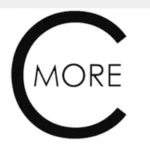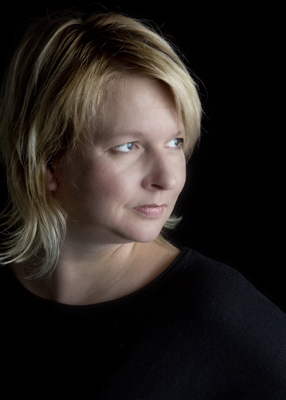Trends spotted
at the
Dutch Design Week | DDW15
by Esmay Gunter
Scroll naar beneden voor NL
Esmay Gunter, International Lifestyle Studies Student at Fontys in Tilburg with subject of study trend watching and concept, visited the Dutch Design Week in Eindhoven together with me. In the line of her study, she wrote a trend report in the form of a blog post. Very interesting to read her findings!
Enjoy!
Dutch Design Week & Trends by Esmay Gunter
Just like any other year, the Dutch Design Week took place at Eindhoven from October 7 till October 28. Being an International Lifestyle student, I went to the fair searching for signals and trends that stood out in the world of design.

DDW15 Trend – Let It Be – | “Cosmetic Surgery” by Bora Hong | “Gewildgroei” by Benny Meek | Table by Yolanda Heintze | Pictures by Esmay Gunter
– Let It Be –
The first trend I spotted was the opposite of what the beauty standard is today. these days, everything has to be perfect and everything your body does naturally is being pushed back to maintain this image of perfection. The opposite reaction on this beauty standard shows us that we don’t need to hunt for perfection and just let our body go his way.
A perfect example is cosmetic surgery, something that becomes more and more the standard for people these days.
Designer Bora Hong questions the meaning of beauty and design trends by comparing them with the development in the design branch. Just like a cosmetic surgeon, Bora Hong transforms old second-hand chairs in to iconic design masterpieces, such as the LCW chair of Eames. by doing so she tries to show people that changing someone’s body, or in this case, a chair goes against the way you really are.
Another signal that follows this trend is ’’Gewildgroei’’, a project by Benny Meek. Instead of working against nature, he wants to work together with nature. He thinks that this is something crucial that has to change in the way we look at ourselves. weeds are seen as something unwanted. That’s why Benny Meek designed a tile where ”Gewildgroei”, the counterpart of weeds, are allowed to grow as they like. This way nature can go her way without being stopped. This also creates more real nature in cities which helps adding to a healthy environment.
Yolanda Heintze has designed a table in which this trend has been taken very literally. Nature grows right thru the table, making it look like nature was just left there like it was.
——————–

DDW15 Trend – Fit in – | “Current Window” by Marjan van Aubel | 3D Printed canal house by DUS architects | lamp ” ZUID” by Francoise Oostwegel | Pictures by Esmay Gunter
– Fit in –
Due to recent demographic changes and technological advancement it sometimes seems that cultures slowly fade away. But something like culture is really important, it is part of someone’s identity. I spotted multiple signals that try to maintain culture, but at the same time trying to fit this culture in to modern day designs. This creates new ways to implement your own culture.
An example of this signal is “Current Window” by Marjan van Aubel. It is a modern day version of stained glass windows created with modern day instruments. The colored glass extracts electricity out of daylight which can be used to power your electronic devices inside your house. This way you can even charge your phone whilst sitting next to your window by having it plugged in the implemented USB-ports in your window sills. This creates an old cultural aspect like stained glass, into something modern and innovative.
Another signal of this trend is the 3D Print Canal House, a 3D printed canal house located in Amsterdam-Noord. It is a project by DUS Architects and Partners. This makes for a whole new way of building the iconic canal houses by using the latest innovative technology, and still maintaining the cultural aspect of the houses.
Lamp ,ZUID’, designed by Francoise Oostwegel, is another signal that fits the trend. She used the cultural heritage of Limburg to design this creation, such as the mining area and the traditional craftsmanship houses. This makes ,ZUID’ not only a lamp, but it also tells the story of our most southern province.
——————–

DDW15 trend – Sense Intense – | Clock “O” by Wout Wolf Stroucken | “Solid Vibrations” by Ricky van Broekhoven and Olivier van Herpt | “Ripening Rugs” by Adrianus Kundert van Nieuwkoop | Pictures and trend report By Esmay Gunter
– Sense Intense –
Everything has to be quick these days. Every second counts and we barely have any time to stop and think about something or to think about things that have happened before. It creates a feeling of time just flying by. This creates a desire to intensify the present, and to relive certain memories to feel this intense feeling once more. I have spotted certain signals that go further than anything else before, and that try to give you an intense feeling.
Wout Wolf Stroucken designed a clock named “O”. The clock has no numbers, nor an indicator. The time is indicated by colors. Just like a tree’s growing rings, the clock shows the time using the rings that grow from the center of the clock towards the border. This makes people able to focus more on the now and here, rather than worrying about the future.
Another interesting design that plays with intensive feelings is “Solid Vibrations”. Ricky van Broekhoven and Olivier van Herpt build a 3D printer for ceramic designs. It allows them to interfere with the printing process by using vibrations caused by sounds. This makes it possible to transform music into something you can touch because it’s printed on something solid. It happens a lot that a certain song makes people remember certain things like a nice summer holiday. That specific song can now be transformed into something solid, something that you can actually hold and touch. This makes the memory more intense because not only can you hear the song, now you can even touch it.
And last, Adrianus Kundert van Nieuwkoop designed “Ripening Rugs”. These are carpets that show a positive effect when they are used much. The carpets actually ‘come to life’ when they are used intensively. They change color, patron or even texture.
Trends gespot
tijdens de
Dutch Design Week | DDW15
door Esmay Gunter
Esmay Gunter, Student International Lifestyle Studies op het Fontys in Tilburg, met als richting trendwatching en conceptontwikkeling heeft samen met mij de Dutch Design Week in Eindhoven bezocht. In het kader van haar studie heeft zij een trendreport in de vorm van een blogpost gemaakt. Zeer interessant om haar bevindingen te lezen.
Geniet!
——————–
Dutch Design Week & Trends door Esmay Gunter.
Ook dit jaar vond de Dutch Design Week plaats in Eindhoven, van 17 t/m 25 oktober. Als International Lifestyle Student ging ik naar de beurs op zoek naar opvallende signalen en trends in de wereld van design.
——————–
– Let It Be –
De eerste trend die ik gespot heb is een tegenreactie op ons schoonheidsideaal. Tegenwoordig moet alles maar perfect zijn en worden natuurlijke omstandigheden of veranderingen tegengegaan. De tegenreactie hierop laat zien dat we juist niet moeten streven naar perfectie en de natuur niet moeten tegenwerken.
Een voorbeeld hiervan is bijvoorbeeld de cosmetische chirurgie, wat vandaag de dag steeds normaler lijkt te worden.
Designer Bora Hong bevraagt de betekenis van schoonheids- en design-trends door cosmetische chirurgie te vergelijken met ontwikkelingen in het designveld. Als een plastisch chirurg bouwt Bora Hong tweedehands stoelen om naar iconische ontwerpen, zoals de LCW stoel van Eames. Op deze manier laat ze zien hoe het aanpassen van iemands lichaam, of in dit geval een stoel, zijn eigenheid ondermijnt.
Een ander signaal wat bij deze trend aansluit is het project „Gewildgroei” van Bennie Meek. Hij wil niet meer tegen de natuur inwerken maar juist met de natuur meewerken, iets wat volgens hem een noodzakelijke omslag moet zijn in ons denken. Onkruid wordt gezien als iets ongewenst. Bennie Meek heeft daarom een stoeptegel ontworpen waar gewildgroei (de tegenhanger van onkruid) door de nieuw vormgegeven tegels mag groeien. Op deze manier kan de natuur toch zijn gang gaan, zonder dat het wordt tegengehouden. Het brengt bovendien meer échte natuur in een stad, wat bijdraagt aan een gezondere leefomgeving.
Yolanda Heintze ontwierp een tafel waarin deze trend letterlijk in opgenomen is. Het groen groeit door het meubelstuk heen, waardoor het lijkt alsof de natuur is gelaten zoals het is.
——————–
– Fit In –
Door demografische veranderingen en technologische vooruitgang lijken culturen soms te vervagen. Toch is cultuur heel belangrijk, het is een gedeelte van iemands identiteit. Ik heb signalen gespot die inspelen op het behouden van een eigen cultuur, maar juist wel die passen in de tijd van nu. Er ontstaan dus nieuwe manieren om de eigen cultuur opnieuw te implementeren.
Een voorbeeld hierbij is “Current Window” van Marjan van Aubel. Het is een moderne variant op een glas-in-lood raam, gemaakt met hedendaagse technologie. Het gekleurde glas wekt namelijk elektriciteit op uit daglicht, wat gebruikt kan worden voor elektrische apparaten in huis. Zo kan je ook je telefoon opladen bij het raam, doordat er USB poorten in de vensterbank verwerkt zijn. Op deze manier wordt een cultureel aspect van vroeger in een nieuw jasje gestoken en is het juist een innovatief object geworden
Een ander signaal bij deze trend is de 3D Print Canal House, een 3D geprint grachtenpand in Amsterdam-Noord. Het is een project van DUS Architects en partners. Door het gebruik van deze innovatieve technieken kunnen de typisch Amsterdamse grachtenpanden op een nieuwe manier worden gebouwd, zonder dat de cultuur verloren gaat.
Ook is Lamp ‚ZUID’, ontworpen door Francoise Oostwegel een signaal die bij deze trend past. Ze heeft zich bij dit ontwerp namelijk laten inspireren door cultureel erfgoed in Limburg. Onder andere door de traditionele vakwerk huisjes en het mijnengebied in Limburg. Op deze manier is ZUID dus niet alleen een lamp, maar verteld het een verhaal over de meest zuidelijke provincie van Nederland.
——————–
– Sense Intense –
In de tegenwoordige digitale wereld telt iedere seconde en hebben we bijna geen tijd meer om écht bij dingen stil te staan of aan momenten terug te denken. Er bestaat een gevoel dat alles maar aan ons voorbij vliegt. Hierdoor ontstaat een behoefte naar het intensiveren van het hier en nu en het herleven van bepaalde momenten, zodat dat intensieve gevoel ook weer herbeleefd kan worden. Ik heb signalen kunnen spotten die verder gaan dan anders en inspelen op een intensief gevoel.
Zo heeft Wout Wolf Stroucken een klok genaamd „O” ontworpen, zonder cijfers en wijzers. De tijd wordt weergegeven aan de hand van kleuren. Net als de groeiringen van een boom, toont de klok de tijd in de ringen die groeien vanuit het midden naar buiten toe. Op deze manier kan men meer focussen op het hier en nu, zonder te veel bezig te hoeven zijn met de toekomst.
Een ander interessant signaal dat inspeelt op het intensiveren van momenten is Solid Vibration. Ricky van Broekhoven en Olivier van Herpt bouwden een 3D printer voor keramiek. Hierbij kunnen ze door middel van geluidstrillingen het printproces beïnvloeden. Muziek kan hierdoor tastbaar gemaakt worden doordat er een materiële belichaming van geluid gevormd kan worden. Vaak doet een bepaald nummer mensen terugdenken aan bijvoorbeeld die ene vakantie. Dat moment kan nu intenser gevoeld worden door niet alleen te luisteren maar ook het daarbij behorende object te kunnen voelen.
Ten slotte heeft Adrianus Kundert van Nieuwkoop „Ripening Rugs” ontworpen. Dit zijn vloerkleden die een positieve effect geven door intensief gebruik. De tapijten komen bij intensief gebruik als het ware tot leven en veranderen in een andere kleur, textuur of nieuw patroon.
——————–
















